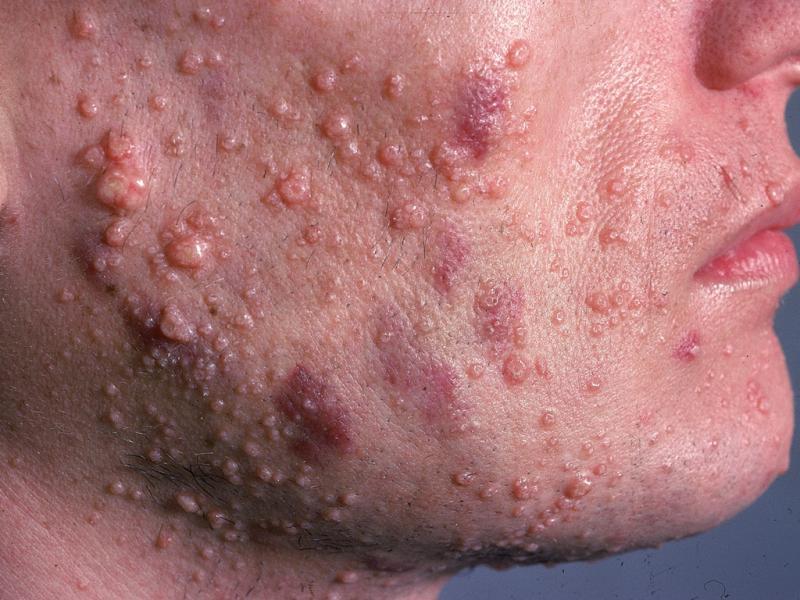Published on

Differential Diagnosis
• Herpes simplex virus
• Sebaceous hyperplasia
• Warts
• Milia
• Keratoacanthomas
Diagnosis
Molluscum contagiosum.
Learnings
Molluscum contagiosum is a contagious disease caused by infection with a DNA poxvirus. It manifests as smooth, firm papules with a central umbilication. Molluscum contagiosum may be spread by direct contact (most often in children) or via sexual transmission in adults. Molluscum contagiosum infections have also been associated with swimming pools. Many times, patients with it are asymptomatic, but there can be surrounding irritation in association with pruritus. The disease is relatively chronic and may persist for several months or up to 2 years before disappearing. Autoinoculation allows the spread of lesions prior to resolution. In the immunocompetent host, the disease tends to be self-limited.
What to Look For
Patients present with smooth, whitish or skin-colored pearly papules of 2 to 6 mm with a central umbilication (depression), often clustered together. With excoriation, lesions can be spread directly, forming a linear array of mollusca.
In adults, molluscum contagiosum is usually sexually transmitted, and lesions are therefore more commonly distributed on the mons pubis, the genitalia, perineum, inner thighs, and lower abdomen. This is not true in children.
Lesions are rarely found in the mouth or on the palms or soles. As lesions resolve, they may become more inflamed and erythematous, causing a characteristic “molluscum dermatitis.”
The central umbilication within a firm papule is highly suggestive of molluscum contagiosum. The umbilication may be difficult to see but becomes more obvious when the lesion is gently frozen with liquid nitrogen. Larger lesions will frequently have more than one umbilication.
